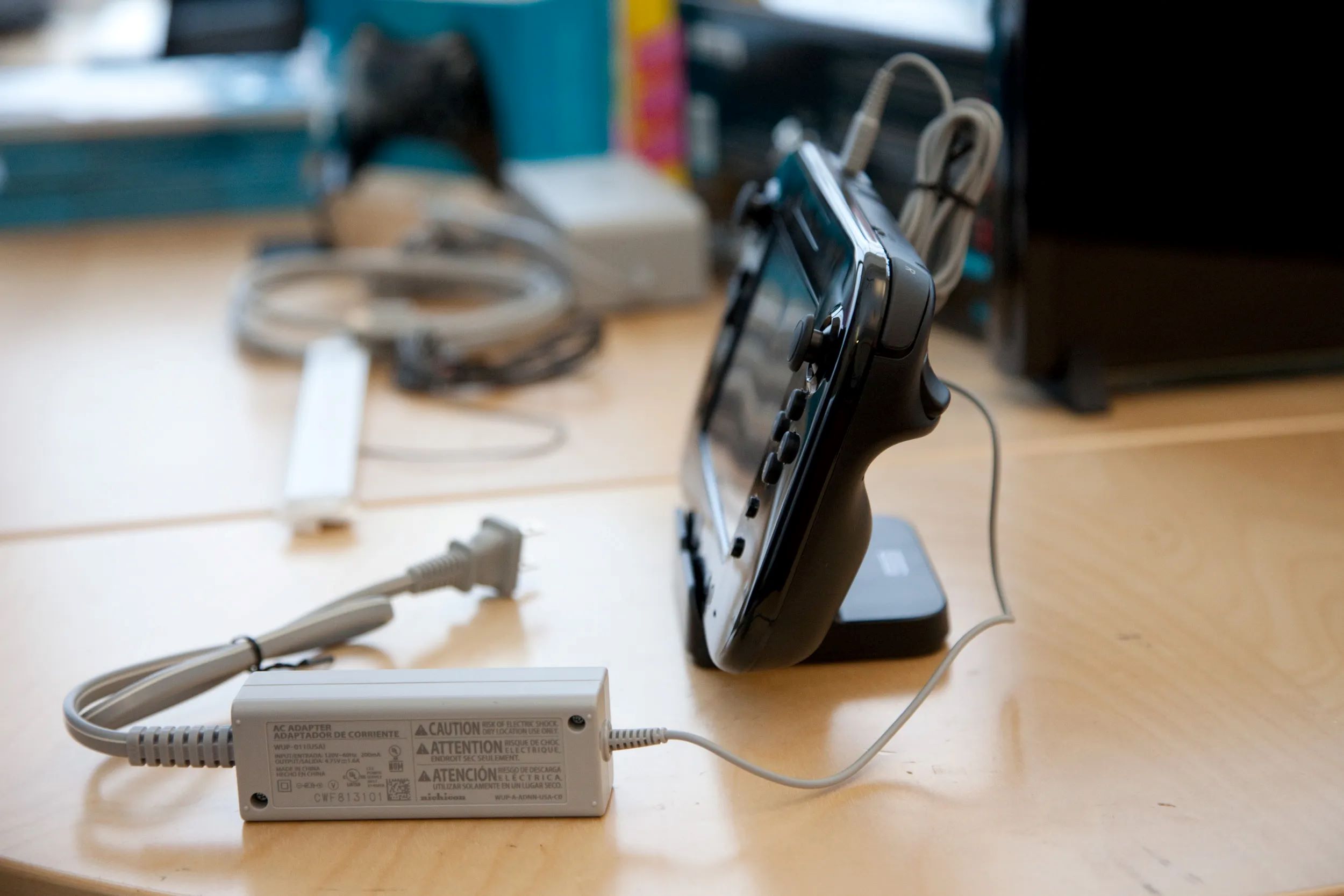How to Charge the Wii U Gamepad
How to Charge the Wii U Gamepad
To charge the Wii U Gamepad, you will need the included AC adapter and a power outlet. Follow these simple steps to ensure your Gamepad stays powered up and ready for action:
-
Locate the Charging Port: The Wii U Gamepad features a charging port located at the top of the controller. Insert the small end of the AC adapter into this port.
-
Connect the AC Adapter: Plug the larger end of the AC adapter into a power outlet. Ensure that the outlet is easily accessible and not obstructed to prevent any damage to the adapter or Gamepad.
-
Charging Indicator: Once the Gamepad is connected to the power source, a small LED light on the top of the controller will illuminate, indicating that the charging process has begun. The LED light will turn off once the Gamepad is fully charged.
-
Charging Time: The Gamepad typically takes approximately 2.5 to 4 hours to fully charge, depending on the remaining battery level.
-
Unplugging the Gamepad: Once the Gamepad is fully charged, unplug the AC adapter from the power outlet and the charging port on the Gamepad to prevent overcharging and conserve energy.
By following these steps, you can easily keep your Wii U Gamepad charged and ready for uninterrupted gaming sessions.
Understanding the Gamepad Battery Life
As an essential component of the Wii U gaming experience, understanding the battery life of the Gamepad is crucial for uninterrupted gameplay. The Gamepad is powered by a rechargeable lithium-ion battery, offering an average playtime of 3 to 5 hours on a full charge.
Several factors can influence the Gamepad’s battery life:
- Screen Brightness: The brightness level of the Gamepad’s screen significantly impacts battery consumption. Lowering the screen brightness can extend the battery life, especially during extended gaming sessions.
- Wireless Connectivity: Utilizing the Gamepad’s wireless features, such as the gyroscope, NFC, and wireless communication with the console, can affect battery drain. Minimizing unnecessary wireless usage can help conserve battery power.
- Volume and Audio: The volume level and usage of audio features on the Gamepad can contribute to battery consumption. Adjusting the volume or using headphones can aid in preserving battery life.
It’s important to note that the Gamepad’s battery life may vary based on individual usage patterns and environmental conditions. Additionally, the battery’s lifespan may gradually diminish over time with regular use, necessitating eventual replacement or professional servicing.
By comprehending the factors that impact the Gamepad’s battery life, users can make informed decisions to optimize their gaming experience and effectively manage the Gamepad’s power resources.
Tips for Extending the Gamepad Battery Life
Maximizing the battery life of the Wii U Gamepad is essential for prolonged gaming enjoyment. By implementing the following tips, users can effectively extend the Gamepad’s battery life and minimize interruptions during gameplay:
- Adjust Screen Brightness: Lowering the screen brightness of the Gamepad can significantly reduce power consumption, extending the overall battery life. Users can access the settings menu to adjust the brightness level based on their preferences and ambient lighting conditions.
- Manage Wireless Features: When not in use, disabling unnecessary wireless features such as NFC and wireless communication with the console can conserve battery power. Additionally, limiting the use of the gyroscope and other wireless functionalities can contribute to prolonged battery life.
- Utilize Sleep Mode: Activating the Gamepad’s sleep mode when taking short breaks or pausing gameplay can help conserve battery life. The sleep mode feature reduces power consumption during idle periods, preserving battery power for extended gaming sessions.
- Optimize Audio Settings: Adjusting the volume level and utilizing headphones for audio output can minimize battery drain. By managing audio settings and using headphones, users can enjoy immersive sound while preserving the Gamepad’s battery life.
- Regular Charging Routine: Establishing a regular charging routine for the Gamepad, especially after extensive use, ensures that the battery remains adequately charged for uninterrupted gameplay. Consistent charging practices can help maintain the overall health and longevity of the Gamepad’s battery.
By incorporating these practical tips into their gaming habits, users can proactively enhance the Gamepad’s battery life, fostering an uninterrupted and immersive gaming experience.
Troubleshooting Common Charging Issues
Encountering charging issues with the Wii U Gamepad can disrupt the gaming experience. By addressing common charging issues with the following troubleshooting steps, users can effectively resolve potential problems and ensure seamless charging functionality:
- Verify Power Outlet and Adapter: Ensure that the power outlet is functional and that the AC adapter is securely plugged in. Users should also inspect the adapter for any signs of damage or wear that may hinder proper charging.
- Reset the Gamepad: In some cases, performing a reset on the Gamepad can resolve charging issues. To reset the Gamepad, press and hold the power button for at least four seconds, then attempt to initiate the charging process again.
- Clean Charging Port: Accumulated debris or dust in the charging port can impede the connection and hinder charging. Gently clean the charging port using a soft, dry cloth to ensure a proper connection with the AC adapter.
- Inspect Battery Health: If the Gamepad experiences persistent charging issues, it may indicate a deteriorating battery. Users can contact customer support or seek professional assistance to assess the battery’s health and explore potential replacement options.
- Update System Software: Ensuring that the Wii U console’s system software is up to date can address compatibility issues that may affect charging functionality. Users should check for available system updates and install them as needed.
By diligently troubleshooting and addressing common charging issues, users can restore the Gamepad’s charging functionality and maintain a reliable power supply for uninterrupted gaming sessions.

